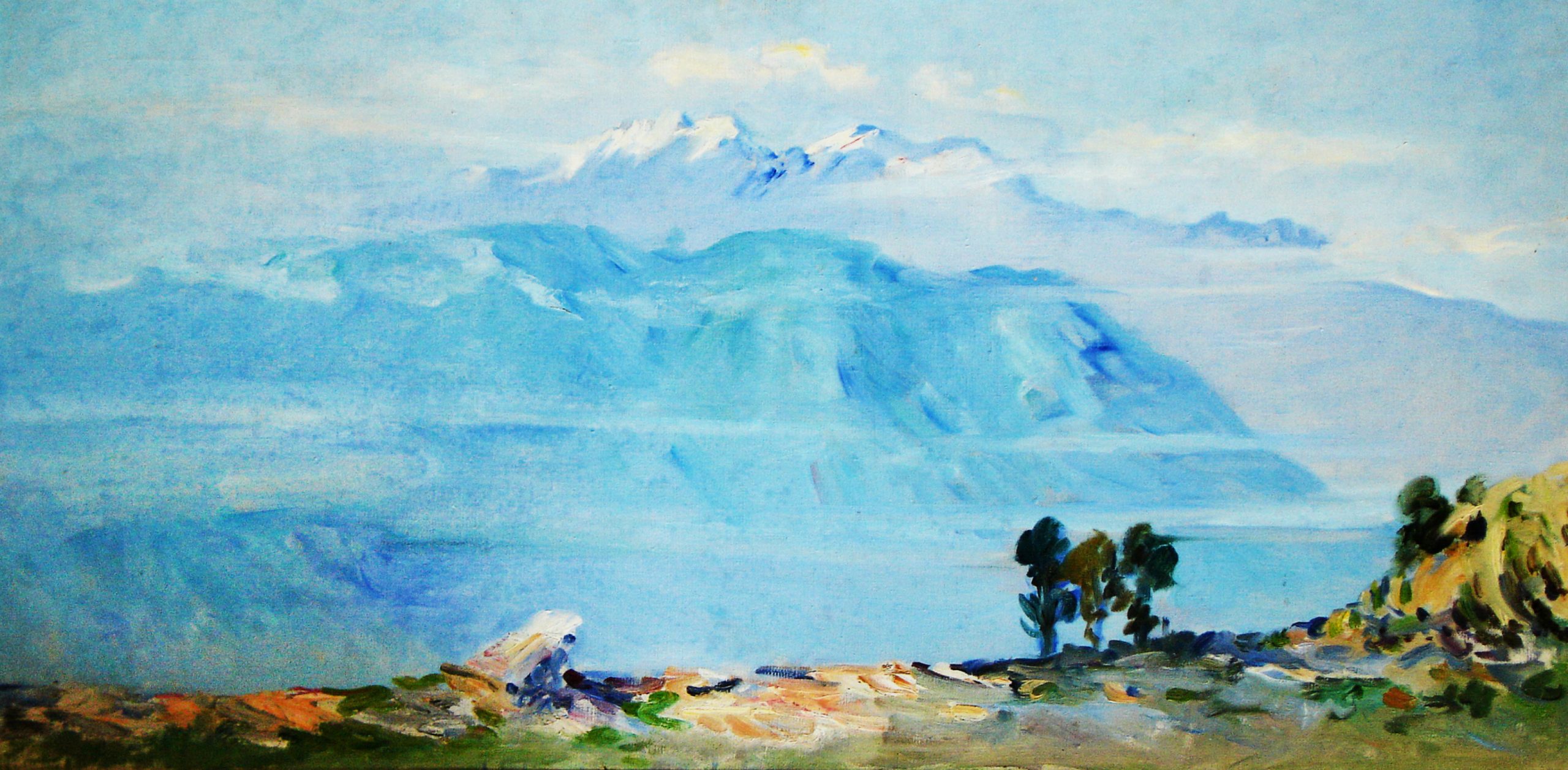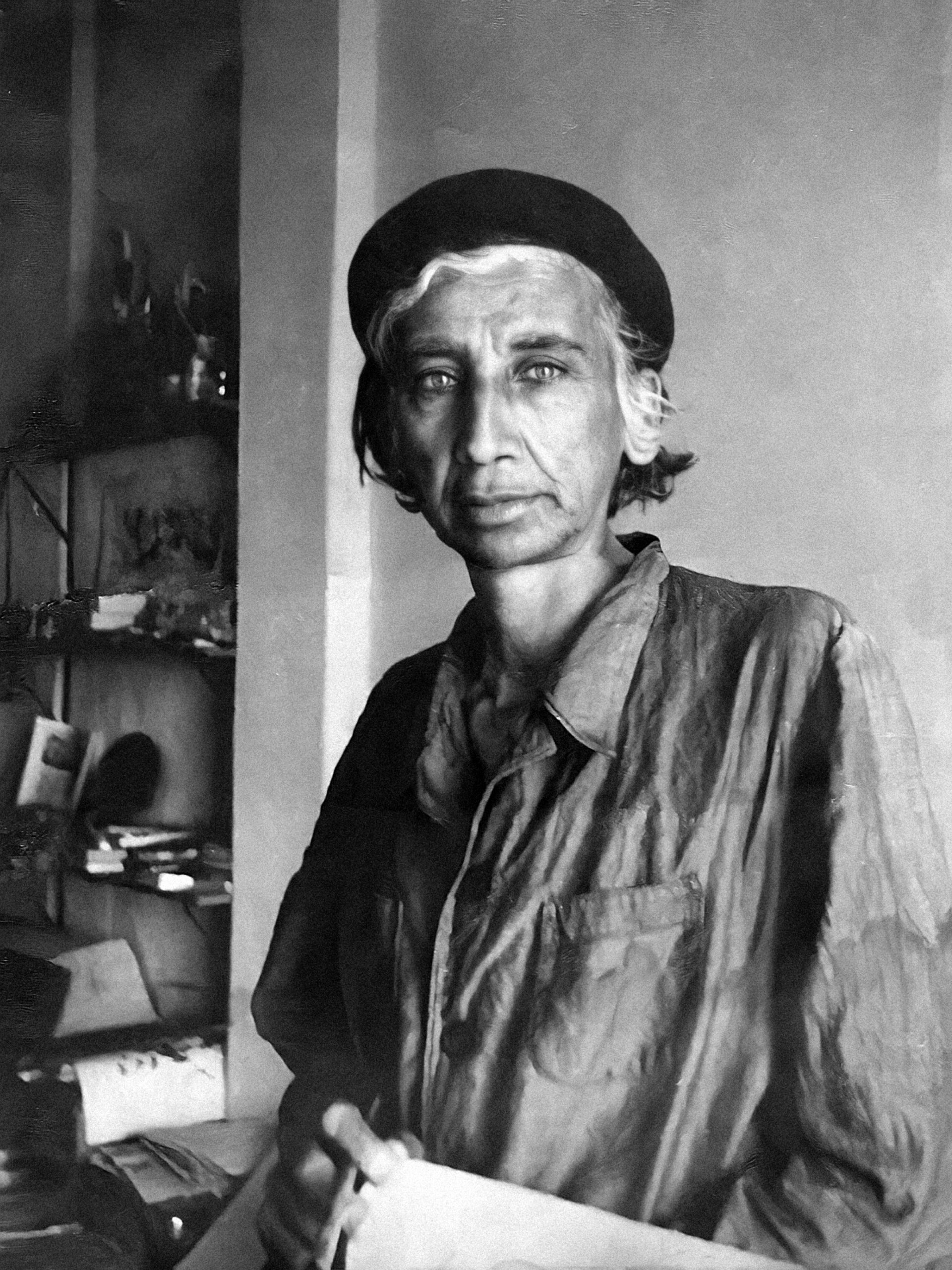Karabakh and Shusha in the painting of the Azerbaijani artist Sattar Bahlulzade
Describing the nature of Karabakh in a painting was a lifelong dream of Azerbaijani artist Sattar Bahlulzade. In 1956, Sattar Bahlulzade first went to Shusha, Karabakh, before visiting Tiflis (Georgia), where his solo exhibition was to be discussed.

“Jidir Plain”
In the book named “Sattar Bahlulzade” published in 1959 by the Azerbaijani art critic Rasim Afandiyev, it is noted that “Shusha enchanted him (Sattar Bahlulzade) with its magnificent beauty, unique alpine meadows, and mountain peaks covered with eternal snow caps.” Here he spent 3 months. During this period the artist made more than 70 paintings, on the basis of which he painted such landscape works as “Jidir Plain” (in translation from Azerbaijani, it means horse racing field – it is a plain area in the southern part of Shusha) (1956-1957), as well as “Near Shusha”, “Yukhari Dashalti”, “Chakmag forest” (1956-1957), “Smoky mountains”, “Karabakh landscape” (1957), “In Karabakh” (1959), “Karabakh motif” (1950-s).
[R. Afandi. Sattar Bahlulzade. 1959, p. 25-26; 65]
[Art of Soviet Azerbaijan. Fine art. Graphic. Sculpture. 1970, p. 146]
[Essays on the fine arts of Soviet Azerbaijan. 1960, p. 98]
[Z. Aliyev. An innocent man of a sinful world or romanticism of Sattar Bahlulzade. 1974, p. 17;39;41;64;69;78]
Sattar Bahlulzade’s landscapes of Karabakh express the magnificence and beauty of this land, the strong contours of snow-white mountains and rocks, breadth of fields and rich green forests. In all these landscapes, the artist praises the beauty of intact, virgin nature. Unlike the Guba works (Guba city, Azerbaijan), these paintings are less “lively” in nature – the artist’s lyrical excitement is expressed in them. Sattar Bahlulzade’s painting “Chakmag Forest” depicts the state of nature at sunset, while the paintings “Jidir Plain” and “Near Shusha” are based on harmony of cold and dark tones – blue and green, orange, red and yellow.
[Art of Soviet Azerbaijan. Fine art. Graphic. Sculpture. 1970, p. 146]

“Yukhari Dashalti”

“Chakmag forest”
Rasim Afandiyev considered the painting “Yukhari Dashalti” (Dashalti – a village near Shusha) to be the most successful of this series of Karabakh landscapes. He noted:
“The painting depicts the characteristic landscape of Nagorno-Karabakh. Early in the morning, the last star has just gone out. A majestic silhouette of a snowy mountain peak can be seen above the silver-white mist. S.Bahlulzade skillfully described the most accurate range of color transitions. And that’s why, when you look at this landscape, you imagine all nature in motion – the clouds are gradually disintegrated by the first life-giving rays of sun, and a beautiful mountain panorama is revealed. In this work, Bahlulzade’s painting becomes bolder and more confident, and sometimes the artist is amazed how quickly he can finish his work, which is very difficult in terms of coloristic point of view. The paint tone found in the palette falls on the canvas freely and gently, in the form of broad brush marks, leaving the proper highlights on the untouched parts of the canvas. The movement of the brush repeats the rhythm of clouds and reflects the shape of rocks”.
[R. Afandi. Sattar Bahlulzade. 1959, p. 26]

“Karabakh motif”

“Near Shusha”
Later, Sattar Bahlulzade’s works “Jidir Plain” (1956-1957), “Near Shusha”, “Yukhari Dashalti” and other works dedicated to Karabakh were exhibited at the All-Union Art Exhibition dedicated to the 40th anniversary of the October Revolution held in Moscow (November 5, 1957 – March 16, 1958). In these paintings, one can feel the infinite expanse of the fields, the harsh majesty of the snow-white mountains and steep rocks, the pink bloom of the fertile gardens, and sometimes the decorative excess attaching to the external effect.
[R. Afandi. Sattar Bahlulzade. 1959, p. 26]
[Art of Soviet Azerbaijan. Essays. Fine art. Sculpture, Graphics. 1960, 111]
[Azerbaijani artists. Sattar Bahlulzade. 1958, p. 3]

“In Karabakh”
Sattar Bahlulzade presented the paintings “Karabakh Landscape” and “Near Shusha” to Shikhali Gurbanov, secretary of the Central Committee of the Communist Party of Azerbaijan.
[Z. Aliyev. An innocent man of a sinful world or Sattar Bahlulzade romanticism. 1974, p. 78]

Sattar Bahlul oghlu Bahlulzade was born on December 2 (15) 1909 in the village of Amirjan (present Amirjan settlement) near Baku. He mainly painted landscapes, thematic paintings, still lifes and portraits. Among his works are: “Babak Uprising” or “Defence of Bazz Castle” (1940), “Guba Khan Fatalikhan” (1946), “The Shore of Gudyalchay” (1953), “Among the Gardens” (1954), “Amirjan” (1957), “Evening on the Caspian Sea” (1959), “Along the Kur” (1961), “The Beauty of the Caspian” (1964), “Awakening” (1965), “Spring in My Country” (1967), “Tale of Azerbaijan” (1970), “Ancient Fires of Surakhani”, “Portrait of Fuzuli”, “Nakhchivan Motif” (1971); “Conversation with God” (1973) etc. In 1960, he was awarded the title of Honored Artist, and in 1963 (1964) he was awarded the title of People’s Artist of the Azerbaijan SSR. In 1972, he became a laureate of the Azerbaijan SSR state award. The artist died on October 13, 1974 in Moscow. He was buried in Amirjan settlement, Baku.
[Artists of the peoples of the USSR. Bibliographic dictionary. First volume. 1970, p. 309]
[Z. Aliyev. An innocent man of a sinful world or Sattar Bahlulzade romanticism. 1974, p. 7;30;145;150;191-192]
[Comprehensive encyclopedic dictionary. 1993, p. 114]
[Short artistic encyclopedia. Art of the countries and peoples of the world. 1. Australia-Egypt. 1962, p. 58]
[R. Afandi. Sattar Bahlulzadeh. 1959, p. 25]